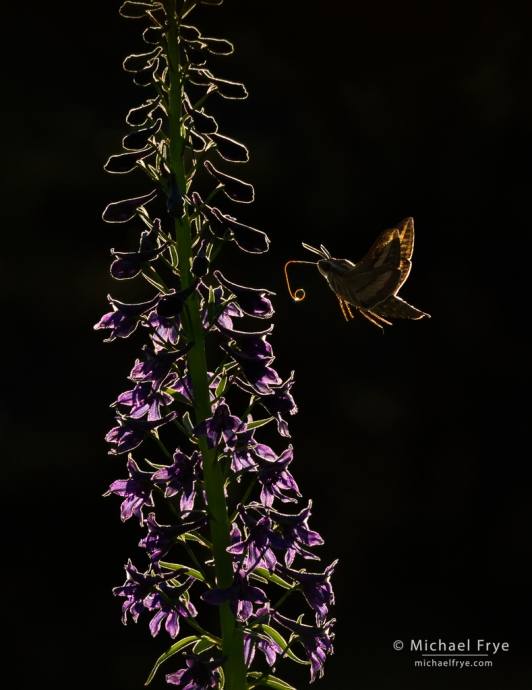
White-lined sphinx moth and larkspur, Yosemite NP, California. 200mm, 1/4000 sec. at f/16, ISO 1250.
Summer arrived late this year in the Sierra high country, as the prodigious amounts of snow left over from last winter took awhile to melt. Snowmelt, mosquitos, and wildflower blooms all started and ended at least a month later than normal.
But that meant that summer lingered longer as well; we were still finding lots of flowers in late August.
And something about the timing of everything, or the great abundance of flowers, seemed to suit the white-lined sphinx moths. Claudia and I started seeing lots of these moths, along with their caterpillars, during July in the Eastern Sierra, and kept finding them anywhere we saw flowers for a good two months afterward.
These large moths are nectar feeders. They resemble hummingbirds as they buzz around a patch of flowers, hovering next to blossoms with rapidly-beating wings. But sphinx moths, being insects, have four wings rather than two. And instead of a pointed beak with an extensible tongue, they have a long, flexible proboscis that allows them to reach inside tubular flowers to find nectar.
We found hundreds of these moths feeding on patches of larkspur in the Yosemite high country. That was probably more than I’d seen in my whole life before this summer. We also watched them sipping nectar from sunflowers and a butterfly bush next to our house in Mariposa, sometimes alongside monarch butterflies or hummingbirds. They seemed to be everywhere, and were a lot of fun to watch.
You’ll find a video below that shows sphinx moths swarming around fields of larkspur, then slow-motion of one moth feeding on a larkspur, where you can see how it uses its proboscis to probe deeply into the flowers. As we watched, they always ascended upward along a Larkspur stalk, feeding from bottom to top, then flying off to a different plant.
But aside from the mothy entertainment, we enjoyed just viewing and photographing all the late-summer flowers. It was great to see all that color linger so long. We’re transitioning from a long, long wildflower season right into autumn.
— Michael Frye
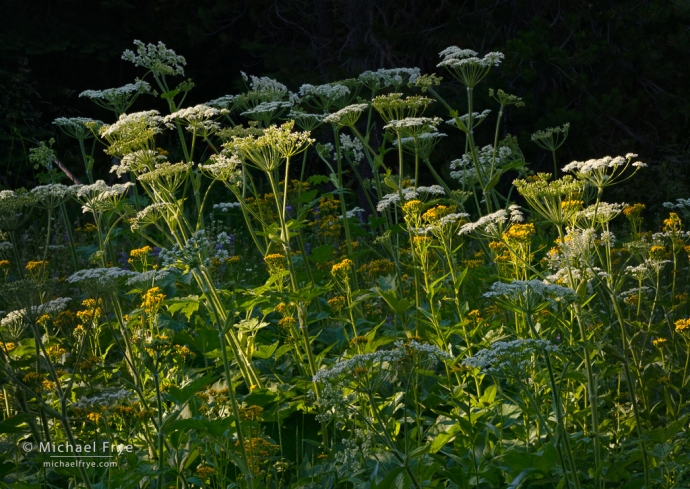
Cow parsnips and arrowleaf butterweeds, Yosemite NP, California. 280mm, 1/15 sec. at f/16, ISO 100, six-frame focus-stack blended with Helicon Focus.
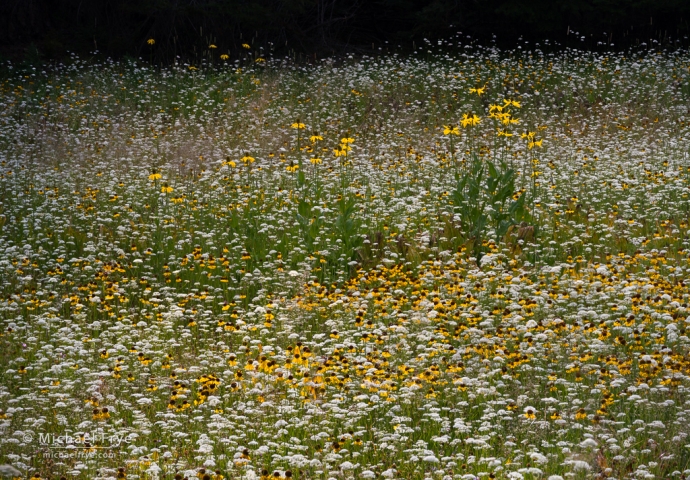
Coneflowers, sneezeweeds, and yampa, Yosemite NP, California. 400mm, 1/45 sec. at f/16, ISO 100, six-frame focus-stack blended with Helicon Focus.
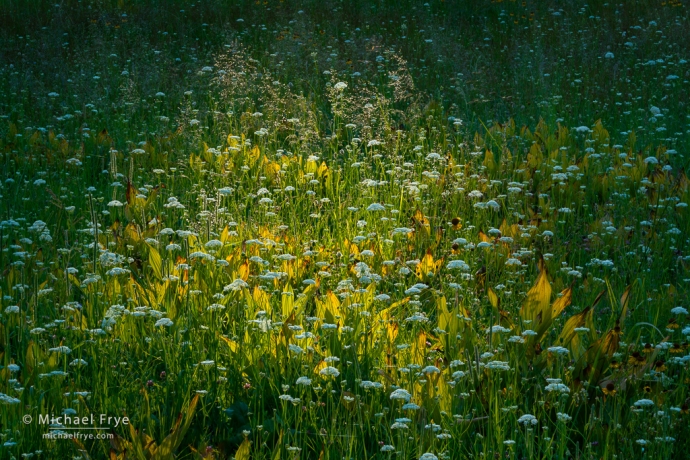
Backlit yampa and corn lilies, Yosemite NP, California. 194mm, 1/10 sec. at f/16, ISO 100, five-frame focus-stack blended with Helicon Focus.
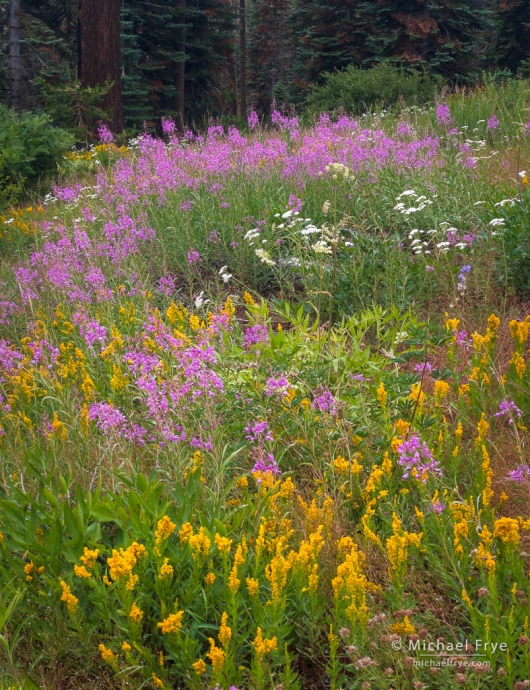
Fireweed, goldenrod, and yarrow, Yosemite NP, California. iPhone 12 Pro Max with 1x lens (7.5mm), 1/500 sec. at f/2.2, ISO 20.
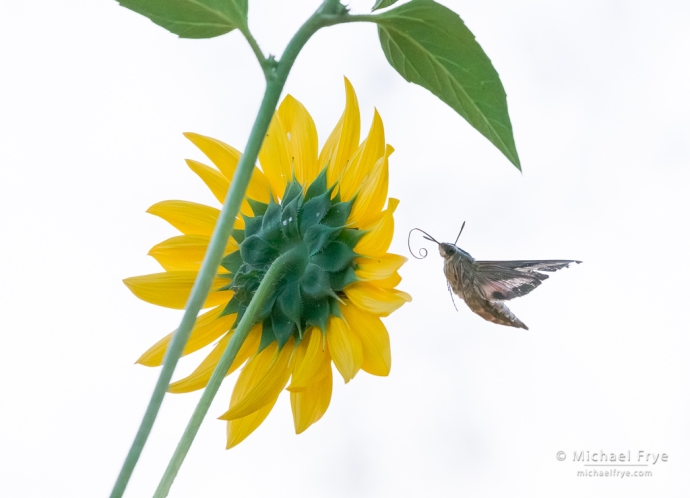
White-lined sphinx moth and sunflower, Mariposa County, California. 360mm, 1/4000 sec. at f/11, ISO 8000.
Related Posts: Melting Ice; Eastside Flowers
Michael Frye is a professional photographer specializing in landscapes and nature. He is the author or principal photographer of The Photographer’s Guide to Yosemite, Yosemite Meditations, Yosemite Meditations for Women, Yosemite Meditations for Adventurers, and Digital Landscape Photography: In the Footsteps of Ansel Adams and the Great Masters. He has also written three eBooks: Light & Land: Landscapes in the Digital Darkroom, Exposure for Outdoor Photography, and Landscapes in Lightroom: The Essential Step-by-Step Guide. Michael has written numerous magazine articles on the art and technique of photography, and his images have been published in over thirty countries around the world. Michael has lived either in or near Yosemite National Park since 1983, currently residing just outside the park in Mariposa, California.

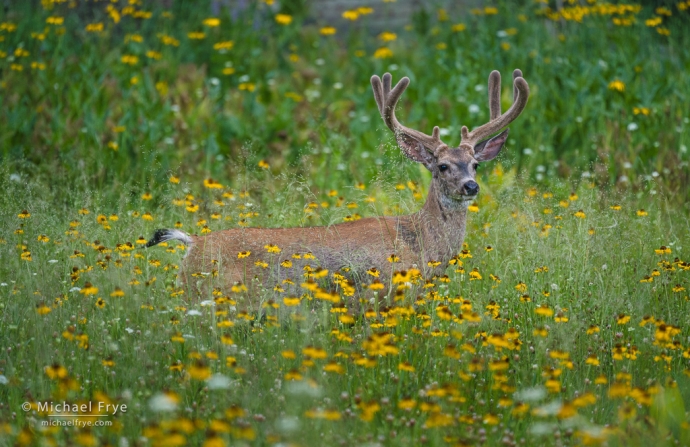
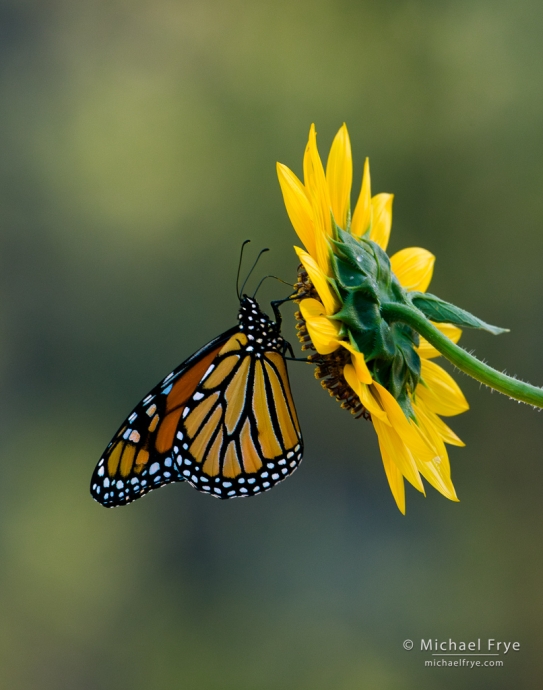








I appreciate each lovely image and the amazing video. Thank you.
It seems the sphinx moth had a bumper year everywhere. We even had one on our doormat in a crowded suburb. They are much more beautiful on the Larkspur.
Michael,
I couldn’t find a way to message you on your Facebook page, but someone has infected your page there by responding to everyone who comments. Wanted to bring to your attention.
Beautiful photos, as always!
Thanks Lili! Yes, I saw that and blocked that person, so hopefully that takes care of it.
Well I hope the doormat-occupying moth was okay! Wish I knew what caused them to proliferate so much. Glad you enjoyed the photos and video!
Michael and Claudia,
The images were fantastic, and the video was incredible. Thank you for posting them.
Horatio
Thanks so much “Horatio!”
That was very cool! Thanks for sharing. What a lot of work it is for them to get food! All that flapping, made me tired watching them. Amazing
Beautiful images. as always. I loved the video, never have heard of that moth before.
Wow, great story and video about the moths. Thank you Michael and Claudia!